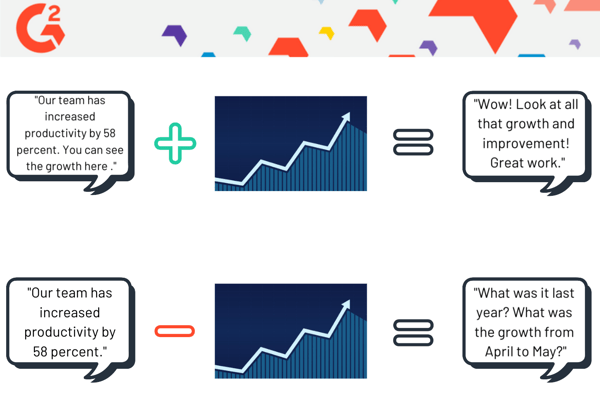“Let me paint you a picture.”
As often as these words are thrown around during meetings, they are still just words. And while there are brains out there that excel in converting words into pictures, others struggle. As those brains sit and take a stab at it, they think, “Why can’t they actually paint me a picture?”
Although not always painted, visual communication can save the day when that picture gives us the help we need to better understand information.
Want details on a specific type of visual communication? Skip ahead to:
What is visual communication?
Pictures aren’t just for children’s books anymore.
Visual communication definition:
Visual communication is delivering information and messages using methods that can be seen. Any time a message can only be received using eyesight, it is a form of visual communication.
While all other types of communication provide information, visual communication does it in a creative way that is appealing to the eye.
Visual communication in business
While businesses typically rely on more formal methods of sending and receiving information, such as verbal or written communication, there is still a need for visual aids in the workplace.
Most of the time, visual communication will accompany another type of communication. Think of it as the sidekick to the various communication channels.

Types of visual communication
There are multiple kinds of visual communication in business, and each one is best paired with a certain type of information.
Graphs
A graph is a type of visual communication that represents numerical data. When presented using only verbal communication, numbers aren’t the most thrilling topic. The more you simply list them, the more that information is going right over your audience’s heads.
In business, graphs are most commonly used to help communicate number-heavy information because it is easier to pull meaning from a visual aid than from a series of spoken numbers.
Let’s look at an example of a graph saving the day.
Say you are meeting with your boss to discuss the increased progress of you and your team, with which you are extremely proud. This information can be presented in two ways: with or without a graph.
Without a graph, you can simply tell your boss that over the last year your team has increased productivity by 58 percent. As impressive as this number may be, the dull delivery leaves your boss resting on a number and without much reaction.
With a graph, you can tell your boss about your team’s productivity, but also show them the month over month breakdown. The visual aid moves the conversation from listing numbers to showing a story of the progress, increasing the comprehension and interest of the viewer.

Take a second look at the information you are about to deliver. If you are finding it has an overwhelming amount of numbers, it might be wise to include a visual aid for your audience.
Photographs
While photographs can act as personal mementos, they also have a place in visual communication in business. Words can only do so much to explain a person, place or thing, so pairing descriptive words with an image always does better in providing the full effect.
Let’s look at an example of a photograph doing the descriptive work for you.
Say you are in charge of on-boarding new team members. The company you work for has a humble beginning, and you are doing your best to highlight the progress it has made. You describe it as best you can, but they don’t seem to grasp the intensity of it.
To help them understand, you pull up a photo of the crummy basement where the business originated. The new hires compare the basement pictured to the glamorous office they are currently sitting in and begin to understand the company’s success and appreciate its modest origin.

Some things are harder to describe than others. Recognize the times when accompanying a message with a photograph is your best bet.
Models
Models provide examples of how something should ideally look. If you have ever provided someone with an example of a final product, you are providing them with a visual aid in the form of a model.
In business, models are especially useful when training someone to complete a task they have never done before. Directions are helpful, but examples will provide more detail about the format and execution of the final product.

In a detail-oriented workplace, models are the key to making sure every part of a project is included and consistent.
Objects
An object might not seem like a form of visual communication, but it is something that people need to look at to understand it. In business, providing a visual aid in the form of a physical object is especially important when your business sells a product.
Whether they are personally selling it or not, all employees should know the product their company is selling inside and out. You can do your best to describe it to them, but it is best for them to physically hold it. As they tamper, they may discover things about the product that would be of interest to a customer that they otherwise wouldn’t have noticed.

Whether it be describing an existing product to a new employee, or a new product to an existing employee, providing the object being sold can increase their understanding.
Picture perfect
Visual communication elements provide the message receiver with another way to go about understanding information. Most people are lying when they say they don’t mind staring at a piece of paper full of text. Give the audience what they really want: visuals.
 by Mary Clare Novak
by Mary Clare Novak
 by Bente Pieters
by Bente Pieters
.png) by Tanuja Bahirat
by Tanuja Bahirat